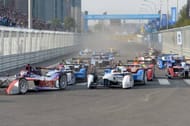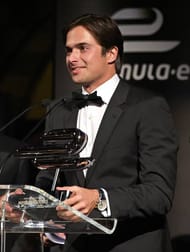With the first-ever Formula E World Championships recently coming to a close in London, we bring you all you need to know about the FIA’s newest venture, which features an array of former Formula One names.
Formula E is a single-seater race, just like Formula One, but the engines, rules and regulations are all different. Here we explain how:
The ‘E’ stands for Electric
The cars are structured like Formula One cars in terms of their aerodynamics, but the engines are entirely electrically powered. Research has shown that electrical motor engines are 90% more powerful than fuel-powered ones, so the power efficiency on Formula E-designed vehicles is far superior than that of F1 cars.
The motor itself is tiny – about the size of an average men’s shoe – but its size belies its power! It can accelerate from 0-100kmph in 3 seconds, and top out at 225 kmph. These electrical engines lack the peripherals that are an integral part of combustion engines like turbo and exhaust, which make the frame lighter and more efficient in terms of operation. This also reduces the sound level of the race overall.
Just like Formula One has fuel caps, Formula E has energy transfer limits – regulations put an upper limit on battery-to-motor energy transfer, which is currently at 28kWh.
How does racing work?
Formula E races are considerably shorter than F1 races – rather than a whole racing weekend, as is the case with F1, each race is a one day event, with practice sessions, qualifying and the race all on the same day. Tracks are much narrower than usual as well.
Race day opens with a 45-minute practice session for drivers, following which they are granted another 30 minutes to get accustomed to the track. The qualifying session follows immediately after.
Unlike F1, where drivers race much like race day to qualify, Formula E qualifying is a direct test of fastest lap times. The whole session lasts just under an hour (55 minutes), and each group of five cars has 10 laps to set a ‘best time’. Drivers are awarded points at qualifying here – the winner will gain 3 points prior to the race.
The race itself is quite short as well, lasting one hour, during which drivers must change their car once during a pit stop. This pit stop is mandatory, and no other alteration to the vehicle– such as tyre changes- are permitted. Power restrictions come into play on race day, but there is one exception drivers can use: FanBoost.
What is FanBoost?
This is literally a way to involve fans in the race. Spectators can vote for their favourite driver, and those with the most votes will receive a 5-second power boost in the form of a temporary increase in power allowance. Points are awarded in the exact same form as they are in Formula One, but with one minor difference. Apart from the extra points for fastest lap at qualifying, the driver with the fastest lap on race day is also awarded two extra points.
Championships
These are near-identical to F1: there is one championship for drivers and another for constructors. This year’s drivers’ championship was won by Nelson Piquet Jr, former F1 driver and son of Brazilian F1 legend and former World Champion Nelson Piquet.
e.Dams Renault took the constructors’ championship trophy this year.



